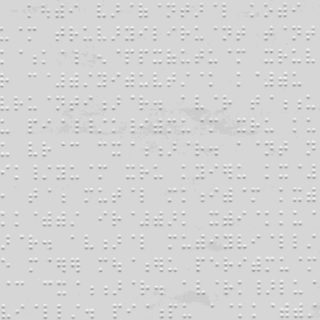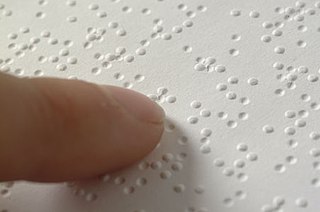History
Education for the blind started in 1912 when Mary F. Chapman, a missionary lady founded a special school for the deaf and blind at Ratmalana. The use of Sinhala braille too runs as far as the beginning of the 20th century. At the beginning, English characters were used to represent Sinhala letters. The Sinhala alphabet comprises 60 letters whereas English has only 26. Moreover, Sinhala has a syllable based alphabet and two English characters had to be used to represent one Sinhala consonant, thus distorting the semblance to sighted print. Therefore, this method was not practical although many users continued to use it as there was no alternative at the time.
In 1947, the first non-foreign principal of the school for the blind at Ratmalana, Kingsley C. Dassanaike, introduced a more practical code which was influenced by the principles and practices of the English braille code. Since then, Sinhala braille has played a significant role in education and communication. Nevertheless, a grade 2 or braille contraction code had not yet been adapted for Sinhala braille, causing lot of inconvenience in using and storing braille material. [2]

Kingsley Clarence Dassanaike, the first non-foreign Principal of the Ceylon School for the Deaf & Blind in Ratmalana, Sri Lanka was the inventor of the Sinhalese Braille system, and served as the Chairman of the Extension Scout Committee for handicapped Scouts of the World Organization of the Scout Movement as well as National Headquarters Commissioner, District Commissioner for Colombo of the Sri Lanka Scout Association from 1958 to 1963 and acting District Commissioner of Moratuwa–Piliyandala in the 1960s.
Several attempts were made in 1959, 1968 and 1997 to introduce Sinhala braille contractions. But, none of these attempts can be observed today.
The contractions introduced in 1959, were mere shortening of long words. Sufficient consideration was not given to the structure of the Sinhala language. Although, the structure of the language was taken into consideration in contractions introduced in 1968, users were reluctant to accept it as there were mainly morphological issues. A large amount of words were contracted in 1997, but it too received the same fate because, some of the contractions were illogical.
In addition to these attempts, most braille users use their own personal methods of contractions. But, these personal ways of contractions has been confined only to them and have not being standardised. To remedy this, a standard braille contraction system should be adapted for Sinhala braille soon. This will certainly result in increasing the productivity of the blind and thus it will make Sinhala braille more popular.





